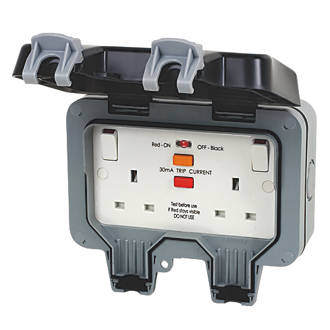I recently put in an outside socket for a hot tub. The hot tub is rated as 13a and hot tub company recommended this outside socket from Screwfix.
BRITISH GENERAL IP66 13A 2-GANG SP WEATHERPROOF OUTDOOR SWITCHED PASSIVE RCD SOCKET
But I thought I'd get "clever" and instead put in a separate RCD inside and then run cable to the socket location closer to where the hot tub is positioned. So I bought...
BRITISH GENERAL IP66 13A 2-GANG DP WEATHERPROOF OUTDOOR SWITCHED SOCKET
and
PRYSMIAN 6943X BLACK 3-CORE 2.5MM² ARMOURED CABLE 10M COIL
and
BRITISH GENERAL 900 SERIES 13A UNSWITCHED PASSIVE FUSED SPUR WHITE
It's all fitted, but... it's only when I considered plugging in a lawnmower into the second socket outside that it occurred to me that I'm then running more than 13a through the RCD.
Someone tell me please... should I be worried?
If I should... I'd like to solve it by replacing the RCD. What would you recommend I swap it for?
Thanks!
BRITISH GENERAL IP66 13A 2-GANG SP WEATHERPROOF OUTDOOR SWITCHED PASSIVE RCD SOCKET
But I thought I'd get "clever" and instead put in a separate RCD inside and then run cable to the socket location closer to where the hot tub is positioned. So I bought...
BRITISH GENERAL IP66 13A 2-GANG DP WEATHERPROOF OUTDOOR SWITCHED SOCKET
and
PRYSMIAN 6943X BLACK 3-CORE 2.5MM² ARMOURED CABLE 10M COIL
and
BRITISH GENERAL 900 SERIES 13A UNSWITCHED PASSIVE FUSED SPUR WHITE
It's all fitted, but... it's only when I considered plugging in a lawnmower into the second socket outside that it occurred to me that I'm then running more than 13a through the RCD.
Someone tell me please... should I be worried?
If I should... I'd like to solve it by replacing the RCD. What would you recommend I swap it for?
Thanks!


